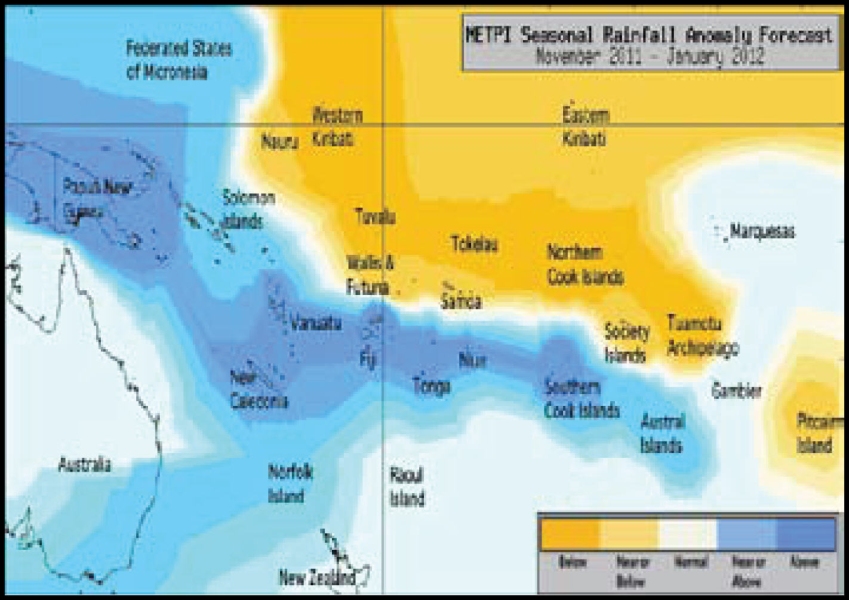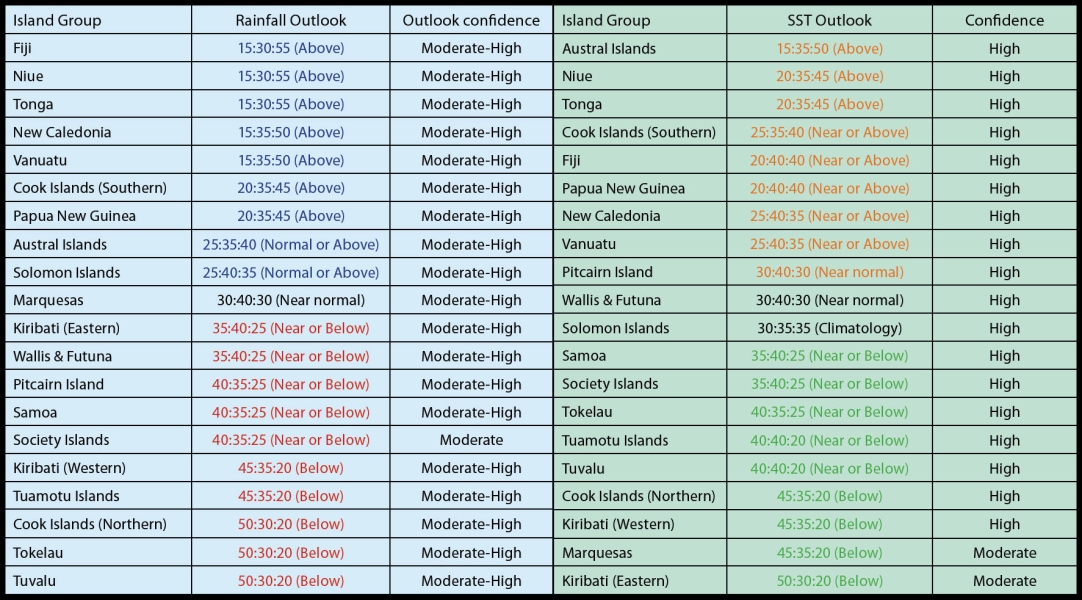A La Niña pattern has re-emerged in the ensemble of global climate forecasts. Suppressed convection is expected in the southwest Pacific near Tuvalu, Tokelau, the Tuamotu Archipelago, the Northern Cook Islands, and Western Kiribati which are forecast to receive below normal rainfall in the coming three months. Despite intermittent rainfall, significant drought that has existed in Tuvalu, Tokelau and the Northern Cook Islands is expected to continue through this period.
Average or below average rainfall is expected for the Society Islands, Eastern Kiribati, Samoa, Pitcairn Island and Wallis & Futuna. The SPCZ is likely to be southwest of normal during the forecast period. Above normal rainfall is likely for Papua New Guinea, Vanuatu, New Caledonia, Fiji, Tonga, Niue and the Southern Cook Islands. Near or above average rainfall is forecast for the Solomon Islands and the Austral Islands. Near normal rainfall is expected for the Marquesas.
For the coming three months, cool sea surface anomalies are expected south of the Equator and east of the Dateline near the Northern Cook Islands, Tuvalu, Tokealu and the northern part of French Polynesia. Below normal SSTs are expected for Eastern Kiribati, Western Kiribati, the Marquesas and the Northern Cook Islands. Normal or below normal SSTs are forecast for Tuvalu, Tokelau, the Tuamotu Archipelago, the Society Islands, and Samoa. Above normal SSTs are forecast for Niue, Tonga and the Austral Islands. Near normal or above normal sea surface temperatures are forecast for Papua New Guinea, New Caledonia, Vanuatu, Fiji, and the Southern Cook Islands. Near normal SSTs are forecast for Wallis & Futuna and Pitcairn Island. No clear SST guidance is offered for the Solomon Islands.
The confidence for the rainfall outlook is moderately high. The average region–wide hit rate for rainfall forecasts issued in November is 69%, six percent higher than the long–term average for all months combined. The SST forecast confidence is mostly high, with greatest uncertainty near the Marquesas.



